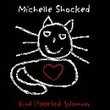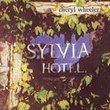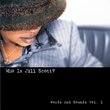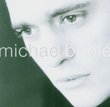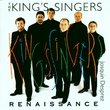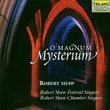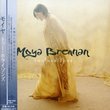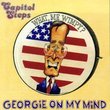| All Artists: Claude Debussy, George Enescu, Cesar Franck, Alexander Zakin Title: Franck, Debussy, Enesco: Violin Sonatas Members Wishing: 0 Total Copies: 0 Label: Sony Release Date: 4/9/1996 Genre: Classical Styles: Chamber Music, Instruments, Strings Number of Discs: 1 SwapaCD Credits: 1 UPC: 074646453223 |
Search - Claude Debussy, George Enescu, Cesar Franck :: Franck, Debussy, Enesco: Violin Sonatas
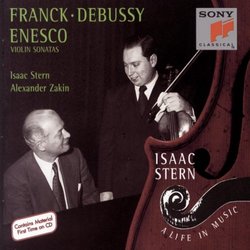 | Claude Debussy, George Enescu, Cesar Franck Franck, Debussy, Enesco: Violin Sonatas Genre: Classical
|
Larger Image |
CD DetailsSimilarly Requested CDs
|
CD ReviewsBrilliant collection, exceptional readings Discophage | France | 12/11/2006 (5 out of 5 stars) "The Franck and Debussy Sonatas were recorded respectively in 1959 and 1960 and paired together on the original LP. The Enesco sonata, though recorded in 1967, wasn't apparently released on LP before 1983, coupled then with Dvorak's Four Romantic Pieces and sonata movements by Schumann and Brahms. The sound in the earlier recordings is stupendous, but surprisingly seems a little more distant in the Enescu (or Enesco as he was known in France), with more audible tape-hiss - maybe the reason for not releasing it at the time? - though it remains very present and entirely acceptable. Anyway, it was a brilliant idea of Sony to bring these 3 pieces together on this well-filled CD, the volume 27 of their Isaac Stern collection ("A Life in Music"). Enesco, born in 1881, though of Romanian origin, was closely linked with France, as he moved to Paris at the age of 14 to complete his studies at the Conservatoire, and remained established there until his death in 1955. But it was not only for this geographical proximity that bringing these three works together was particularly well devised of Sony. In his development as a composer, Enesco can be regarded as a bridge between the German model of Brahms (which strongly inspires his first violin sonata, written at the age of 16) and the French school of Franck (a clear influence on his second sonata, written two years later, but already a very personal composition). Yet, as so many other Paris-established Central Europe émigrés (Martinu springs to mind), Enesco never forgot his roots. His 3rd violin and piano sonata is a work of his maturity (1926), and arguably his masterpiece of instrumental music. Subtitled "dans le caractère populaire roumain" (in the Romanian Folk Character), it apparently doesn't quote any actual Romanian folk melody, but is based on compositional techniques borrowed from his native country's folk music, like its use of the violin's upper reaches and harmonics, with much ornamentation and melismae, its rhapsodic construction, its use of harmonic clutters and clashes. Those with a taste for Gipsy music ought to love it. Enesco himself declared that the composition was the musical transposition of images of his homeland, and especially the Romanian countryside at night, with the ostinato piano quintuplets of the second movement evoking the sounds of the cymbalum and distant echoes of the "toaca", e.g. wooden sticks that monks beat together at dawn in some monasteries. It thus belongs to a family of works which include Szymanowsky's Myths, Bartok' and Bloch's second violin and piano sonatas, or the latter's Baal Sheem - and fascinatingly echoes the fantastic aspects of Debussy's sonata. While there have been more recordings of the Debussy and the Franck than one can count, Enesco's masterpiece hasn't been recorded so often, though it was tackled by such violin luminaries as Enesco himself (including a version with Dinu Lipatti at the piano from 1943, which was re-released on CD in the early 1990s in an Enescu-Lipatti, 2 CD-set on the "Legendary Classics" collection of Philips, now lamentably gone and not even listed on this site), André Gertler (Milhaud & Enescu: Concerto for Violin /Sonata for Violin Import, 1962), Christian Ferras (Les Introuvables De Christian Ferras, 1962) and Yehudi Menuhin (twice and thirty years apart, with sister Hepzibah: in 1936, the piece's premiere recording Menuhin Plays Enescu, Szymanowski, Prokofiev, Ravel and in '66 West Meets East: The Historic Shankar/Menuhin Sessions). Stern magnificently highlights the brooding and quasi-Jewish aspects of the first movement, but with no loss of playfulness and whimsicality in the more animated moments. The various recordings of the piece tend to favor one aspect or the other: chose animated tempos (like Enescu) and you'll elicit a playful and whimsical mood but will be shorter on those brooding qualities, and chose moderate tempos (as André Gertler or Leonidas Kavakos recently, Ravel: Sonate posthume; Tzigane; Enescu: Impressions d'enfance; Sonata No. 3) and you'll bring nostalgia to the fore at the expense of playfulness. Stern I find strikes an ideal balance. As I remarked in his recording of Bloch's Baal Shem (Hindemith, Copland: Violin Sonatas; Bloch: Violin Sonata; Baal shem), a striking and fascinating aspect of his style is the vocal, cantor-like quality of his playing. He also plays with fine tone throughout, producing mesmerizing harmonics in the second movement and displaying great imagination throughout in the way he delivers the myriad colors called for by Enescu. Given the complexity and intricacy of the piano part, no pianist could be a mere accompanist, but Zakin proves himself an admirable partner and virtuoso. Their finale is powerful and savage, close to the young Menuhins' in its fieriness but more alive to the movement's changing moods and with even better tonal control. The Debussy and Franck Sonatas are equally fine. Both partners appear as well suited to Franck's cogent architecture and passionately intense lyricism (although I felt that the climaxes of the finale might have been a tad more animated) as to Debussy's fantastic and light-footed roguishness ("fantasque" is a recurrent indication in his scores). Stern's awesome bow tension and muscularity of utterance never sacrifices the purity of his gorgeous, creamy tone, and Zakin is a partner of equal stature, technically and musically on top of the variegated moods and styles called for by these three compositions. I only regret that in Debussy he should assume the role more of a dutiful accompanist rather than of an equal partner and somewhat restrict his dynamic range in the first movement, making some of his f sound like p, and that he should pedal too much in the second movement, robbing it of some of its sardonic snap. On the other hand he displays awesome clarity of articulation at the beginning of the finale - no hazily blurred impressionism here. Anyway, this is a great disc, and a fine tribute to two formidable musicians. " Debussy sonata m morrissey | L.A., CA United States | 08/09/2002 (5 out of 5 stars) "nothing can compare to this version of the debussy sonata that's out there for me this record pretty much ruined hearing anyone else do that piece : : : : it's goooood!" Too Good to Miss Music Lover | Texas | 03/30/2008 (5 out of 5 stars) "George Enesco's works -- other than a couple of Rhapsodies -- may be unknown to many music lovers, but that just means they can discover real treasures. Enesco, one of the greatest violinists of his time, came from a Roumanian background. He also greatly appreciated Gypsy violinists, and learned from their best. This sonata, performed by Isaac Stern and Alexander Zakin, is spellbinding.
Included on the CD are Debussy's delightfully innovative Sonata for Violin and Piano, and that most romantic of works -- Cesar Franck's A Major Sonata. (Play these at that intimate, candlelight dinner.) Music Enthusiast " |

 Track Listings (10) - Disc #1
Track Listings (10) - Disc #1